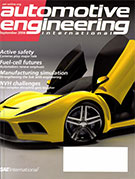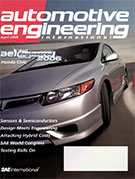Magazine

MOBILITY ENGINEERING: June 2016
2016-06-01
Base-engine value engineering for higher fuel efficiency and enhanced performance Continuous improvement in existing engines can be efficiently achieved with a value engineering approach. The integration of product development with value engineering ensures the achievement of specified targets in a systematic manner and within a defined timeframe. Integrated system engineering for valvetrain design and development of a high-speed diesel engine The lead time for engine development has reduced significantly with the advent of advanced simulation techniques. Cars poised to become 'a thing' Making automobiles part of the Internet of Things brings both risks and rewards. Agility training for cars Chassis component suppliers refine vehicle dynamics at the high end and entry level with four-wheel steering and adaptive damping.


















